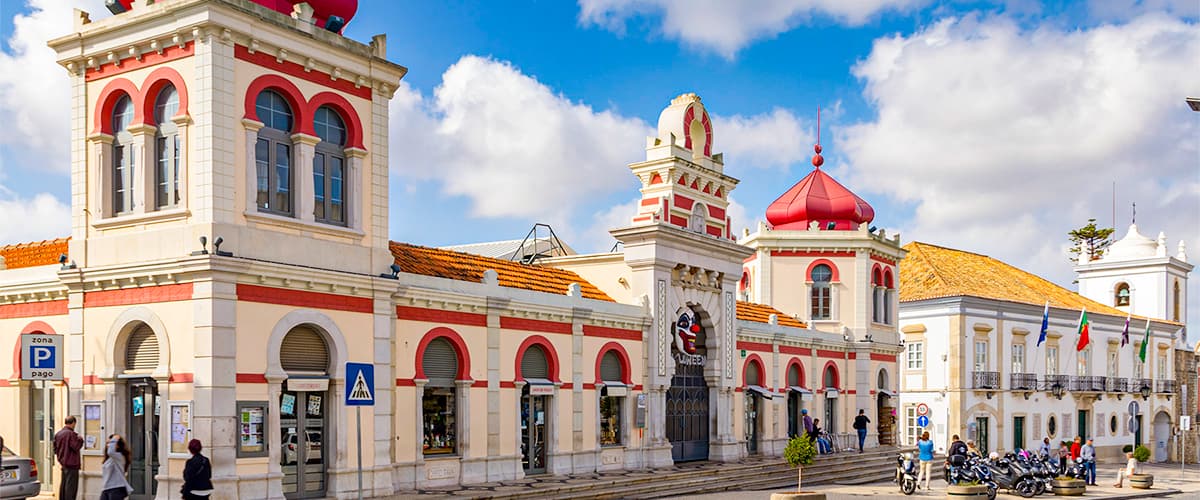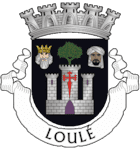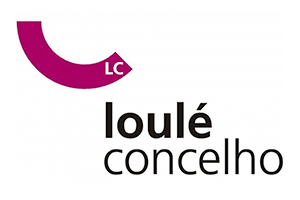 Loulé What to discover and how to enjoy your visit
Loulé What to discover and how to enjoy your visit

 The Municipality of Loulé is divided into the following parishes: Almancil; Alte; Ameixial; Boliqueime; Quarteira; Querença, Tôr and Benafim; Salir; São Clemente; São Sebastião
The Municipality of Loulé is divided into the following parishes: Almancil; Alte; Ameixial; Boliqueime; Quarteira; Querença, Tôr and Benafim; Salir; São Clemente; São Sebastião
Municipal Holiday: Corpus Christi
Inhabitantes: around 70,600
Area: 764 km²
Loulé is a large town set 18km to the northwest of Faro and has a long standing tradition of local hand craft trades, from tin and copper beating, to ceramics and cane furniture, to mention a few. On Saturdays there is a great influx of visitors for the Municipal Market, which sells fresh fruit, vegetables and cakes, amongst other local comestibles and produce.
For those interested in religious culture, there are the churches of St. Clement, St. Francis and Our Lady of Mercy to visit. There is also a Museum of Modern Art, the museum and archaeological site of Cerro da Vila and the Jardim dos Amuados.
Well known throughout the country is the Loulé Carnival, which annually attracts visitors from all over Portugal to celebrate the days of revelry with a parade of many carnival floats, dancing and street animation. But, in order to dance the Samba, as they do in Brazil, the climate needs to be warmer. So, in August, Loulé and Quarteira stage their second carnival - the Summer Carnival.
A variety of modern art exhibitions and musical recitals are held in Almancil, more specifically in the Cultural Centre of São Lourenço. For the more adventurous – there is a chance to do some circuits on the Karting Tracks in Almancil.
The municipality of Loulé also includes Vilamoura, Quarteira, Quinta do Lago and Vale do Lobo, all set on the coast, with luxury tourist developments that offer a wide choice of accommodation for a dream holiday. It is also here that you find the best golf courses in Europe, as well as many varied and excellent top quality restaurants.
The internationally famous Casino and impressive Marina at Vilamoura offer inviting attractions for an evening’s entertainment. It is also possible to visit the Roman ruins or have an exciting game of miniature golf. A family day out can be spent in Semino, near Quarteira, at the various water parks. In any one of the town’s restaurants, at the end of the day, you can savour Quarteira’s well known prawns.
The Barrocal (hinterland) serves as a passageway to the hills, where you can enjoy the scents of the countryside and loose yourself in the spectacular greenery that surrounds the town of Loulé. The Popular Feast Days are celebrated in Boliqueime in June, with parades and samples of local culinary arts.
Alte has been considered one of the most typical villages of Portugal, with its splendid view over the Hills of Caldeirão. Many tourists who are looking for the traditional, hand made arts and crafts visit here. The region holds its Gastronomy, Handcraft and Cultural Fair at the end of April into the beginning of May, followed by a Folklore Festival in August. As local tradition dictates, Salir and Querença also have celebrations in May. On the Dia da Espiga (ear of corn) folk make up garlands with an olive branch, corn ears, daisies and poppies, amongst others. An act full of symbolism, it is said that whoever keeps the garland until the following year, will always have happiness in the home. It is also in May that folk start to eat the small country snails, with wild marjoram and toasted home made bread – a delicacy much appreciated by the nationals.
Don’t miss a visit to Querença, a magnificent place, surrounded by greenery, with its beautiful church, superb view over the hills and some restaurants where you can eat traditional dishes like Cockerel “Cabidela” or “Xarém” (corn porridge, an Algarve speciality). The Fair for garlic sausages and black puddings, or the “Festa de Folares” (Easter cakes) are other reasons to visit the village. It is also the on the way to the Salustreira Grottos, almost 80 metres long, with a ceiling height of 12 metres. Nearby is the Benémola Font.



Move your mouse over the aerial view of the Algarve and click on the chosen destination.

